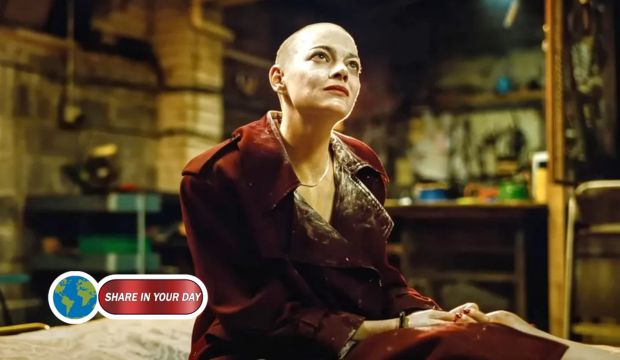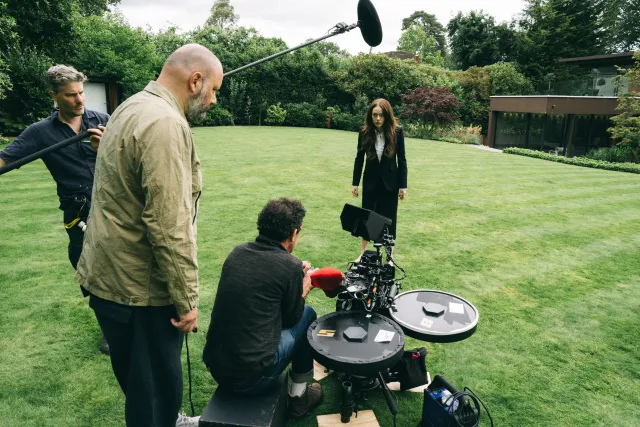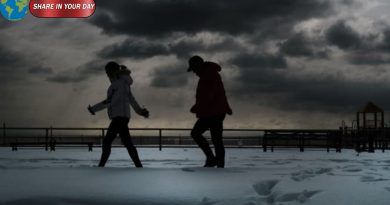Yorgos Lanthimos: Why ‘Bugonia’ Needed VistaVision, Even in a Basement
In the world of filmmaking, few directors push the boundaries of cinema quite like Yorgos Lanthimos. Known for his unconventional approach, Lanthimos has once again surprised audiences with his latest film Bugonia—a film that, despite its tight, basement-bound setting, was shot using a camera format reserved for the grandest of cinematic epics: VistaVision.
The movie follows Teddy (Jesse Plemons), a conspiracy-obsessed kidnapper, who holds CEO Michelle (Emma Stone) captive in his basement. The confined space could easily have stifled the film’s visual impact, but Lanthimos used it as an opportunity to explore new creative territory, both in the way he framed the story and the way he shot it.

On a recent episode of the Filmmaker Toolkit podcast, Lanthimos explained that shooting in such a small, restricted space actually heightened the tension and focus on the characters. “When you limit space, you bring everything closer. You scrutinize the situation in ways you wouldn’t otherwise,” said Lanthimos. “It’s like looking through a microscope, you start asking, ‘What is there?’—and when there’s an explosive dynamic, the intensity is amplified.”
The Bold Decision to Use VistaVision
At first glance, using a massive, outdated camera format like VistaVision for a film set largely in a basement seems counterintuitive. However, for Lanthimos, it was the perfect way to explore his characters’ internal worlds.
“We wanted to portray these characters larger than life,” Lanthimos explained. “Bugonia is all about these big ideas and emotions. We needed something visually grand to reflect that, even though the setting was small.”
VistaVision, known for its wide frame and sharpness, isn’t typically used in small, intimate spaces. But Lanthimos and his cinematographer Robbie Ryan were drawn to its unique aesthetic qualities. After experimenting with VistaVision in a pivotal reanimation scene in Poor Things, the duo realized it was the ideal tool for their vision in Bugonia.
“The format gave us a depth and richness that matched the emotional weight of the film,” said Lanthimos. “It wasn’t about the space being big—it was about capturing the big feelings of the characters.”
The Challenges of the Wilcam 11 VistaVision Camera
While VistaVision offered the filmmakers the visual power they sought, it wasn’t without its challenges. The cameras, known for being temperamental and notoriously loud, were initially deemed too unreliable for Bugonia.

After a bit of digging, Ryan eventually tracked down the Wilcam 11, a quieter version of the VistaVision camera that was still in working order. Despite being bulky and difficult to manage, it was the best available option for what Lanthimos and Ryan wanted to achieve.
“We found one camera that was functioning—but it was massive, temperamental, and it made a lot of noise,” Lanthimos explained. “It was very difficult to load and took forever to set up, but we felt it was worth the trouble.”
In fact, the camera was so problematic that during earlier tests for One Battle After Another, a separate film project, the Wilcam 11 was deemed unreliable by director Paul Thomas Anderson. Its noise made it impossible to capture dialogue during sync sound. However, Lanthimos and Ryan embraced its limitations, turning what could have been an obstacle into an advantage.
“We knew the limitations going in,” Lanthimos shared. “It was a loud camera, and we were filming in a basement. That meant we couldn’t get it far enough from the actors to reduce the sound, so we had to work around it. It became a creative challenge for us. The more restrictions you face, the more creative you get.”
Why VistaVision Was Essential for ‘Bugonia’
For Lanthimos, using the VistaVision was about more than just visual scale—it was about enhancing the psychological intensity of the film. The format allowed him to capture the characters in larger-than-life portraits, accentuating the high-stakes emotions in their confrontations.
“There’s something about photographing characters in such a large format. It makes their presence feel bigger, and their emotions more intense,” said Lanthimos. “Even though the space was small, the VistaVision made the characters feel monumental.”
Ultimately, the decision to shoot Bugonia with VistaVision was about capturing the raw, intense emotions of the characters. The camera’s depth, tonality, and richness of image elevated the tension and made even the smallest moments feel significant.
A Unique Filmmaking Approach
In typical Lanthimos fashion, Bugonia defies expectations. What could have been a simple thriller set in a confined space became a visually complex and emotionally charged experience. Through the marriage of VistaVision’s expansive visuals and a bombastic soundtrack by Jerskin Fendrix, Lanthimos created a film that is as much about its characters’ internal landscapes as it is about the physical confines of the basement.
“It was about finding the right balance between space and emotion,” said Lanthimos. “We took the smallest space and made it feel like a battleground of big ideas and feelings.”
In the end, Bugonia proves that sometimes, the most unexpected choices in filmmaking lead to the most powerful results.



